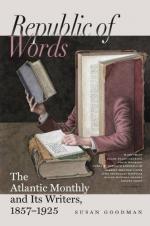But this book of Wilson’s must, under all conditions, and in any contingency, be regarded as worthless. Be the story of the Conquest true or false, this contains no relation of it, this contains no refutation of it. Not content with vilifying his authorities, with impugning their faith, denying their existence, and mangling their names, he has disfigured their statements, corrupted their narrative, and substituted gross absurdities for what was at least beautiful and coherent, whether it was fiction or reality. His book is in every sense a fabrication. It is no record of the truth; it is not a romance or a fable, artfully constructed and elegantly told; it is—to use that plain language which the occasion authorizes and demands—a barefaced, but awkward falsification of history,—so awkward, that it has cost us little trouble to detect it,—so barefaced, that it has been a duty, though, of course, a painful one, to expose it.
Mothers and Infants, Nurses and Nursing. Translated from the French of A Treatise, etc., by DR. AL. DONNE, late Head of the Clinical Department of the Faculty of Paris, etc., etc. Boston: Phillips, Sampson, & Co. 1859.
When the young Count of Paris was at the tender age which requires the food that only mothers and their substitutes can supply, M. Donne, the author of this work, was called in consultation at the royal palace. He had a new way of examining milk through the microscope, and deciding upon its healthy and nutritive qualities or its defects, as the case might be. The whole world was full of the great question just then,—for the deep-bosomed dame of Normandy or Picardy who should be selected was to be the nurse not of a child only, but of a dynasty. So thought short-sighted mortals, at least, in those days,—little dreaming what cradle would be under the square dome of the Tuileries before twenty years were past!
M. Donne, as we said, was the man selected from all men for the task of choosing a nurse for the most important baby of his time. This is a voucher for his position at that period in the great medical world of Paris. He is known, also, to the scientific world by a number of treatises, with some of which we have long been familiar, as, for instance, the “Cours de Microscopic,” with the remarkable Atlas copied from daguerreotypes taken by the aid of the camera. The present work is of a somewhat more popular character than his previous productions.




